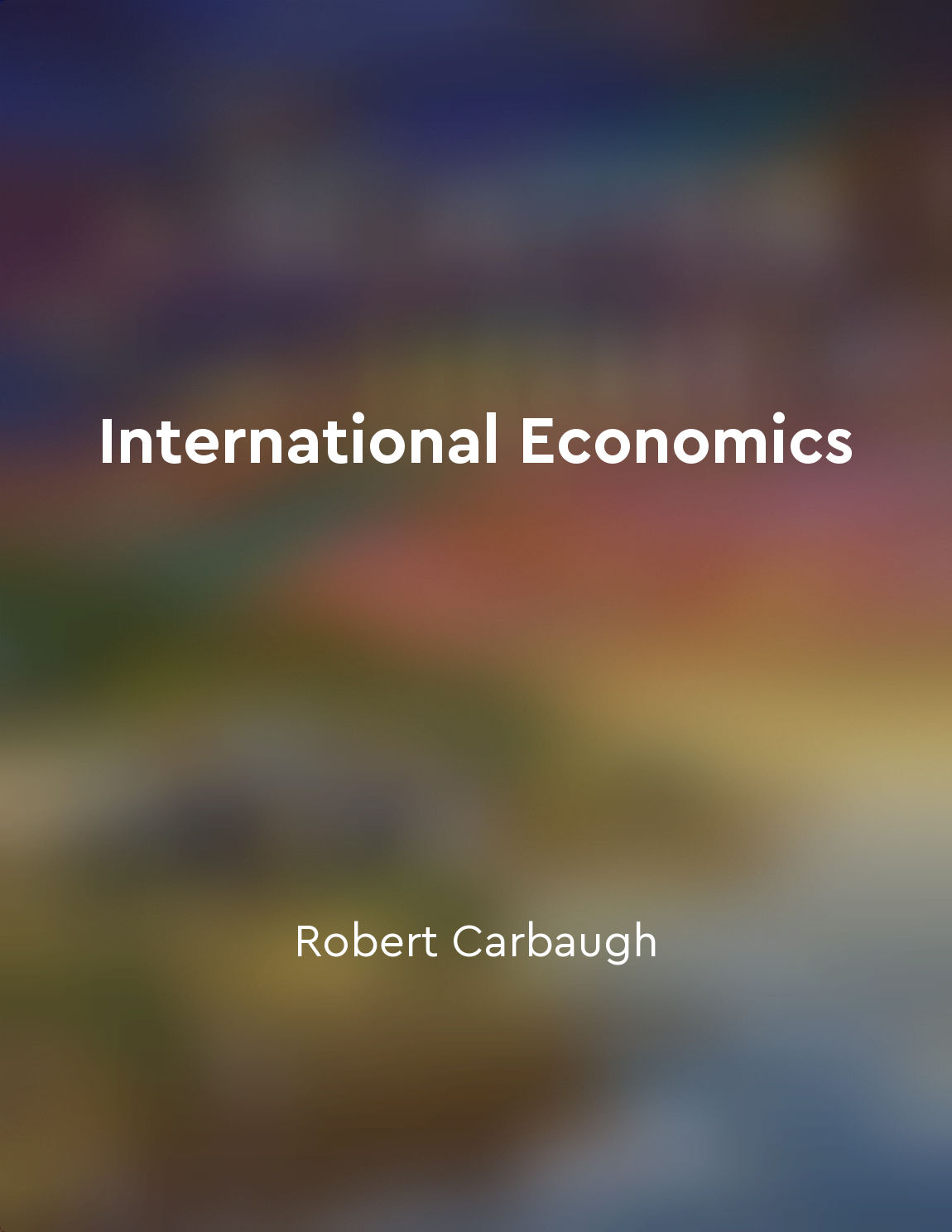Audio available in app
Balance of payments reflects a country's economic status from "summary" of International Economics by Robert Carbaugh
The balance of payments serves as a mirror reflecting a country's economic health and overall standing in the global economy. It provides a comprehensive record of all economic transactions between a country and the rest of the world over a specific period, typically one year. By analyzing the various components of the balance of payments, policymakers, economists, and investors can gain valuable insights into a country's economic performance, strengths, and weaknesses. One key component of the balance of payments is the current account, which tracks the country's trade in goods and services, as well as income receipts and payments from abroad. A surplus in the current account indicates that a country is exporting more goods and services than it is importing, generating a positive flow of income into the country. This can be a sign of a competitive export sector, strong consumer demand, and a healthy economy overall. Conversely, a deficit in the current account signifies that a country is importing more than it is exporting, leading to a outflow of income. This could be due to weak export performance, high levels of domestic consumption, or a reliance on foreign goods and services. A persistent current account deficit can be a cause for concern, as it may indicate an unsustainable trade imbalance and potential vulnerability to external shocks. Another important component of the balance of payments is the capital account, which records all financial transactions between a country and the rest of the world, including foreign direct investment, portfolio investment, and official reserves. A surplus in the capital account suggests that a country is attracting foreign investment and accumulating assets abroad, which can be a positive sign of confidence in the country's economy and financial markets. On the other hand, a deficit in the capital account indicates that a country is investing more abroad than it is receiving in foreign investment, potentially leading to a depletion of reserves and increased vulnerability to financial crises. A careful analysis of the capital account can provide valuable insights into a country's financial stability, investment climate, and external debt levels.- The balance of payments is a vital tool for assessing a country's economic status and overall position in the global economy. By examining the various components of the balance of payments, policymakers and analysts can identify potential areas of strength and weakness, make informed decisions about economic policy, and anticipate future trends and challenges. It is essential to monitor and interpret the balance of payments regularly to ensure a country's economic health and stability in an increasingly interconnected world.


